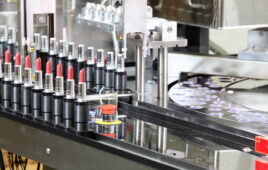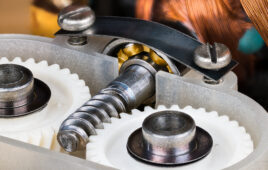Wherever there is motion, an encoder is sure to be found. Encoders may not be as glamorous as the products they go in, but they are critical in today’s complex and sophisticated motion control systems. Because there are so many types of motion control systems, there are a variety of types and styles of encoders.
Encoders can be split into linear, which measure linear motion or speed; and rotary, which measure rotation and are the more common type of encoder. (You can find more on Rotary Encoders in this issue.)
Feedback encoders used with motors come in either encoders with bearings, or modular encoders that use an existing bearing set such as that found on the tail shaft of a servomotor. The choice depends on the stability of the shaft/bearings to which the encoder is attached. Encoders with bearings are typically used when the application shaft has a significant amount of axial or radial run out. This style of encoder will incorporate some sort of flexible member, either a flexible shaft coupling or flexible body mount member, to allow mechanical compliance with the application shaft irregularities and run out.
Modular encoders rely on a mechanically stable application shaft, as the shaft is responsible for holding a rotating code wheel in a precise location relative to the encoder’s sensing element. Modular encoders must be assembled to the application shaft. But this step does not increase the overall expense of the system. Also, motor feedback encoders are generally less environmentally sealed when compared to the industrial style encoder.
Linear and rotary encoders may use optical or magnetic technology to detect position. Optical encoders are more common and provide higher accuracy and resolution. Magnetic encoders have an advantage in that they do not need to be in as tightly controlled of an environment as optical encoders, and can be used in certain environments that have higher humidity, dust, and other harsh conditions.
Optical encoders use an optical sensor to detect light that is transmitted through or reflected from a disk (also known as a code wheel) whose pattern has both transparent and nontransparent lines. When the sensor receives the light, the encoder puts out a high signal. When the light is blocked by a line on the code wheel, the sensor puts out a low signal. With a known pattern on the disk, the distance moved, or speed of movement, can be measured by the encoder.
Magnetic encoders use magnetic code wheels where magnetic poles are separated according to the resolution required. A magnetic sensor detects the change in the magnetic field and produces digital pulse trains from the encoder. Magnetic encoders use less power than their optical counterparts but struggle to provide the same resolution or positional accuracy of an optical encoder due to inherent nonlinearities in the magnetic field.
One of the basic classifications used for encoders is whether their architecture is absolute or incremental. An incremental encoder uses the lines on the code wheel to output a digital pulse train that corresponds to the sensor detecting light and dark regions. Typically incremental optical sensors use multiple sensing elements separated by various mechanical degrees and simple analog to digital electronics to produce two phase shifted output pulse trains (commonly referred to as channel A and channel B). The speed of rotation can be deduced from the frequency of these pulse trains while direction of rotation is derived from the phase difference between A and B. Many times an encoder offers a third output called the index. The code wheel has a second optical channel with a specific optical pattern designed to give a once per rotation pulse, index, which is often used as a known absolute position during the rotation of the encoder code wheel.
A drawback of incremental encoders is that anytime power is lost, the true position of the mechanical system will be lost and will have to be reset to a known initial location and restarted, i.e., homing the system.
An absolute encoder sends out a position word that corresponds to a specific angle of shaft rotation. The absolute position word is defined as a number of bits (10 bits, 12 bits, and so on) that determines the resolution granularity of the encoder over its rotation. The code wheel of this encoder consists of an optical pattern that has a specific pattern for each address or bit of resolution over the rotation of the wheel.
There are a number of industrial serial communication protocols that are used with absolute encoders such as Modbus, CANOpen, and Profibus.
Filed Under: Encoders • optical, Encoders (rotary) + resolvers, Motion Control Tips




